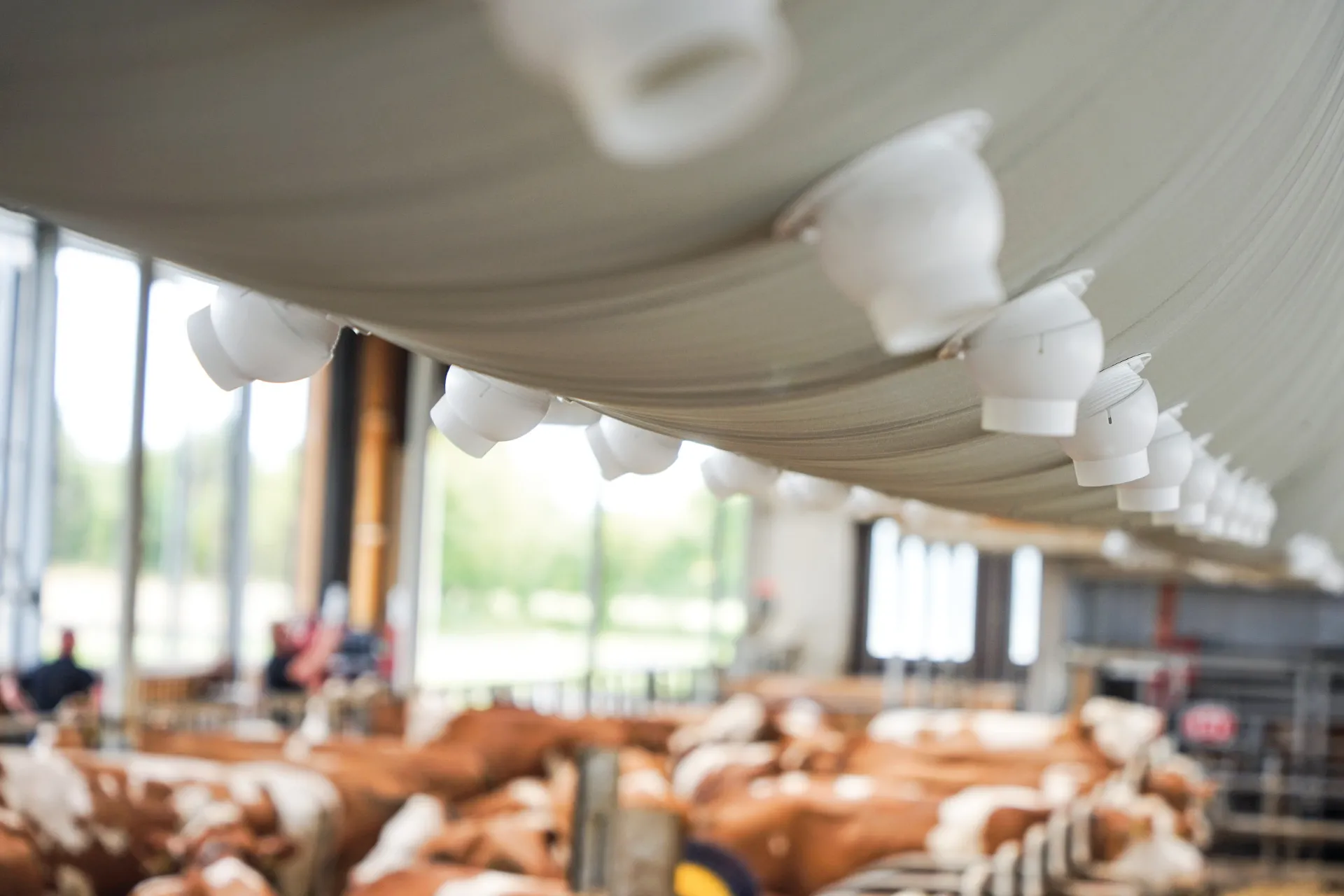Fresh air through barn ventilation
Avoid poor air quality in the barn
Did you know that calves do not yet have fully developed lungs at birth? It takes up to a year before they are fully developed!
Poor air quality can quickly cause respiratory disease in calves. The lungs are often permanently damaged by diseases in calves. Ammonia in the calves’ lying area in particular can lead to irritation of the mucous membranes and chemical burns to the respiratory tract.
What can we do for the health of our calves? Regular manure removal and re-littering: The older the manure mattress, the easier it is for ammonia-producing microorganisms to spread. Ensure constant air movement to reduce the concentration of ammonia and germs by ventilating the barn.
CAT3000® barn ventilation system offers the perfect solution here. Fresh air is conveyed into the calf barn under targeted control, allowing the harmful gases to flow out of the barn. We use the room size, number of animals, animal age and many other factors to calculate the required output of the fan for barn ventilation, which supplies the hose ventilation system with fresh air.

Give us a call,
We are always there for you
and advise you personally: +49 8092 853804-0,
or via our inquiry form:
